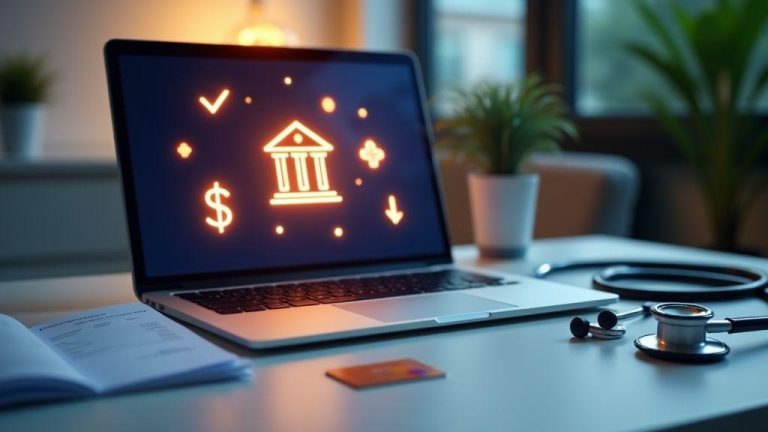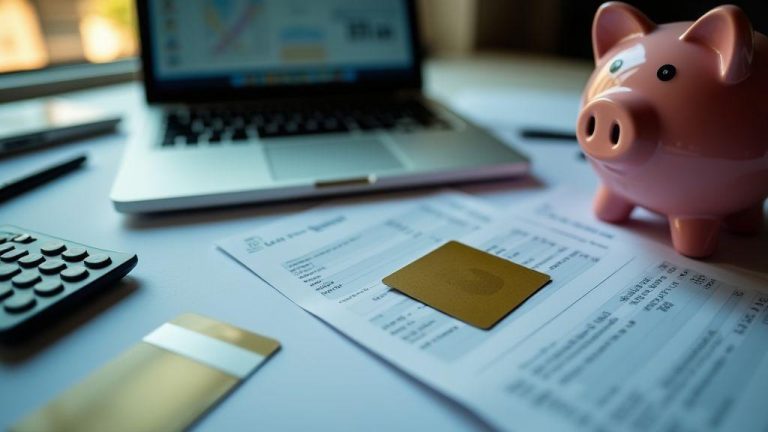Steps to prepare documents for bad credit personal loan applications including proof of income and ID for approval
You can get a loan even with a shaky credit history if you come prepared. Steps to prepare documents for bad credit personal loan applications including proof of income and ID for approval start with gathering clear, dated records that show steady cash flow and identity. Lenders want to see you pay your bills and that you are who you say you are. Nail those basics and you cut the noise out of the process.
Think like a lender. Sort documents that prove income, show bank activity, and confirm your address. Bring recent pay stubs, 1099s or tax returns, and three months of bank statements. If you work gigs or receive benefits, collect deposit histories, client invoices, or award letters. A clean packet makes you look reliable, even if your credit score is low.
Plan for backup options and explain red flags in writing. A short note about a past missed payment or bankruptcy, paired with proof of steady income since, helps. Consider a co-signer or offering a secured option like a car title if you’re comfortable. Preparation helps move you from maybe to yes faster.
Bad credit personal loan document checklist: bank statements, payslips and tax returns
Start with the basics:
- 3 months of bank statements (some lenders ask for 6)
- 2–3 recent pay stubs and year-to-date pay information
- Last 1–2 years of tax returns if self-employed
- W-2s or 1099s as applicable
- Photo ID (driver’s license or passport) and proof of address (utility bill, lease, mortgage statement)
If you’re a contractor, freelancer or gig worker, add invoices, contracts and a simple profit-and-loss summary. If you receive child support, disability or unemployment, include award letters or deposit proofs. The clearer your money story, the more lenders will trust the risk you pose.
How to organize financial documents for loan approval and proof of address
Organize files by type and date. Create PDFs with clear names: BankStatementsMar2025.pdf, PaystubApr2025.pdf. If the lender accepts uploads, this saves time and shows you’re serious. Keep originals in a folder you can hand over if asked.
Proof of address is often overlooked but can stop your application cold. Use a recent utility bill, lease, mortgage statement, or a state-issued document with your current address. If you’ve just moved, add a change-of-address confirmation or a landlord letter. Make sure dates match across ID and address documents.
Gather acceptable ID and income alternatives for bad credit
Acceptable ID usually means a government photo ID (state driver’s license, state ID, or passport). If you don’t have one, some lenders accept combinations—birth certificate plus utility bill and Social Security card. For income alternatives, bring 1099s, bank deposit records showing steady payments, signed client contracts, benefit award letters, or a statement from a regular payer. These items prove cash flow even without a traditional W‑2.
Where to look for lenders who accept proof of income for bad credit loan
Start with lenders that read more than a credit score: online fintech lenders, community banks, and credit unions often accept bank statements, pay stubs, or tax returns as proof of income. Follow Steps to prepare documents for bad credit personal loan applications including proof of income and ID for approval: gather three months of bank statements, a recent pay stub or Schedule C if self-employed, a photo ID, and proof of address. If you show steady deposits or consistent freelance income, many lenders will treat that like a paycheck.
Look beyond big national banks. Local credit unions and community banks can be more flexible because they can look at your full story. Peer-to-peer platforms and some online lenders also accept alternative income documents and can move faster.
Online lenders, credit unions, and banks that accept bank statements
Fintech platforms often build models that look at bank flow, not just FICO, and may ask for 3–6 months of statements. This is often the best route for freelancers, gig workers, and small business owners.
Credit unions and community banks can be more personal; a face-to-face conversation and a relationship with the lender may yield better terms. Bring your statements and talk to a loan officer.
When a co-signer or employment verification letter can improve approval odds
A co-signer with solid credit and income can significantly improve approval odds, but their credit is on the line if you miss payments. An employment verification letter stating title, start date and salary is also helpful—paired with bank statements it can tilt a decision in your favor.
Compare lender rules, fees and acceptable ID before you apply
Before applying, compare APRs, origination fees, prepayment terms and which IDs are accepted. Check whether they require a utility bill for address proof or recent tax returns for self-employed borrowers. Ask for a full repayment schedule in writing and read the fine print.
How to improve your chances and avoid traps when applying with bad credit
Gather proof of steady income, ID, and billing history before you apply. Shop smart: credit unions, community banks and reputable online lenders typically offer better terms than payday shops. If possible, add a co-signer or collateral, or apply for a smaller loan to reduce perceived risk. Use prequalification checks to compare offers without harming your credit score.
Watch the math and read the fine print. Convert fees into an APR to compare true cost. Beware of high APRs, upfront fees, guaranteed approval claims, or pressure to sign immediately—these are red flags for predatory lenders. Verify licensing in your state and search for complaints on the Better Business Bureau or your state attorney general’s site.
Include proof of income for bad credit loan and keep payslips and tax returns ready
Bring:
- Recent payslips (last 2–3) and year‑to‑date stubs
- W‑2s or 1099s
- Tax returns for the past 1–2 years if self-employed
- Bank statements that trace deposits to paychecks
- Award letters for benefits or child support
Make photocopies and digital scans of your driver’s license or passport, Social Security card, and proof of address. If your income is irregular, attach a short note explaining seasonal work or gig pay and include contracts or invoices.
Keep copies, track bank statements, and have co-signer documents on hand
Keep two sets of everything: one paper file and one encrypted digital copy. Track bank statements for several months to prove steady deposits. If using a co-signer, have their ID, Social Security number, recent pay stubs, and a signed consent letter ready.
Quick steps (repeatable summary)
- Steps to prepare documents for bad credit personal loan applications including proof of income and ID for approval: gather 3 months of bank statements, 2–3 pay stubs (or Schedule C/1099s), a government photo ID, and proof of address.
- Scan and label files, keep originals, and prepare a short explanation for any credit issues.
- Consider a co-signer, collateral, or a smaller loan amount to improve approval odds.
Frequently asked questions
Q: What are the Steps to prepare documents for bad credit personal loan applications including proof of income and ID for approval?
A: Gather pay stubs, bank statements, tax returns, photo ID, and proof of address. Make clear copies, scan or take sharp photos, name and date each file, and keep originals ready.
Q: Which IDs should you bring to prove who you are?
A: Bring a government photo ID like a driver’s license or passport. Add a secondary ID if available and include a recent utility bill for address verification.
Q: How do you prove income if you are self‑employed or gig working?
A: Use tax returns, 1099s, bank deposit records, invoices and a profit‑and‑loss summary. A letter from an accountant can help. Show steady deposits.
Q: How should you organize your files to speed up approval?
A: Make a checklist, put paper docs in a folder, keep digital files in one labeled folder, use clear file names and a one‑page summary. Be ready to email or upload quickly.
Q: What extra steps can you take to improve approval with bad credit?
A: Add a co-signer or collateral if possible, lower the loan amount, show steady income, and provide a brief explanation for past credit issues. Be honest and ready to answer questions.
Conclusion
Following these Steps to prepare documents for bad credit personal loan applications including proof of income and ID for approval will make the process smoother and faster. Clear, organized paperwork and honest explanations often turn a maybe into a yes.



